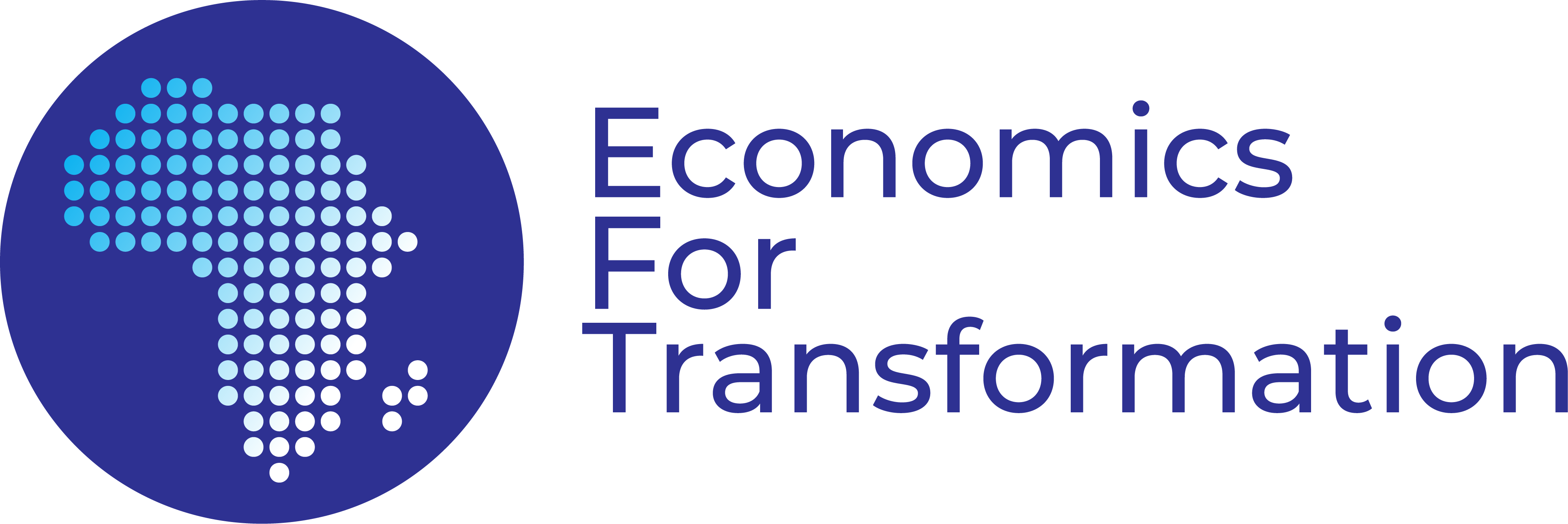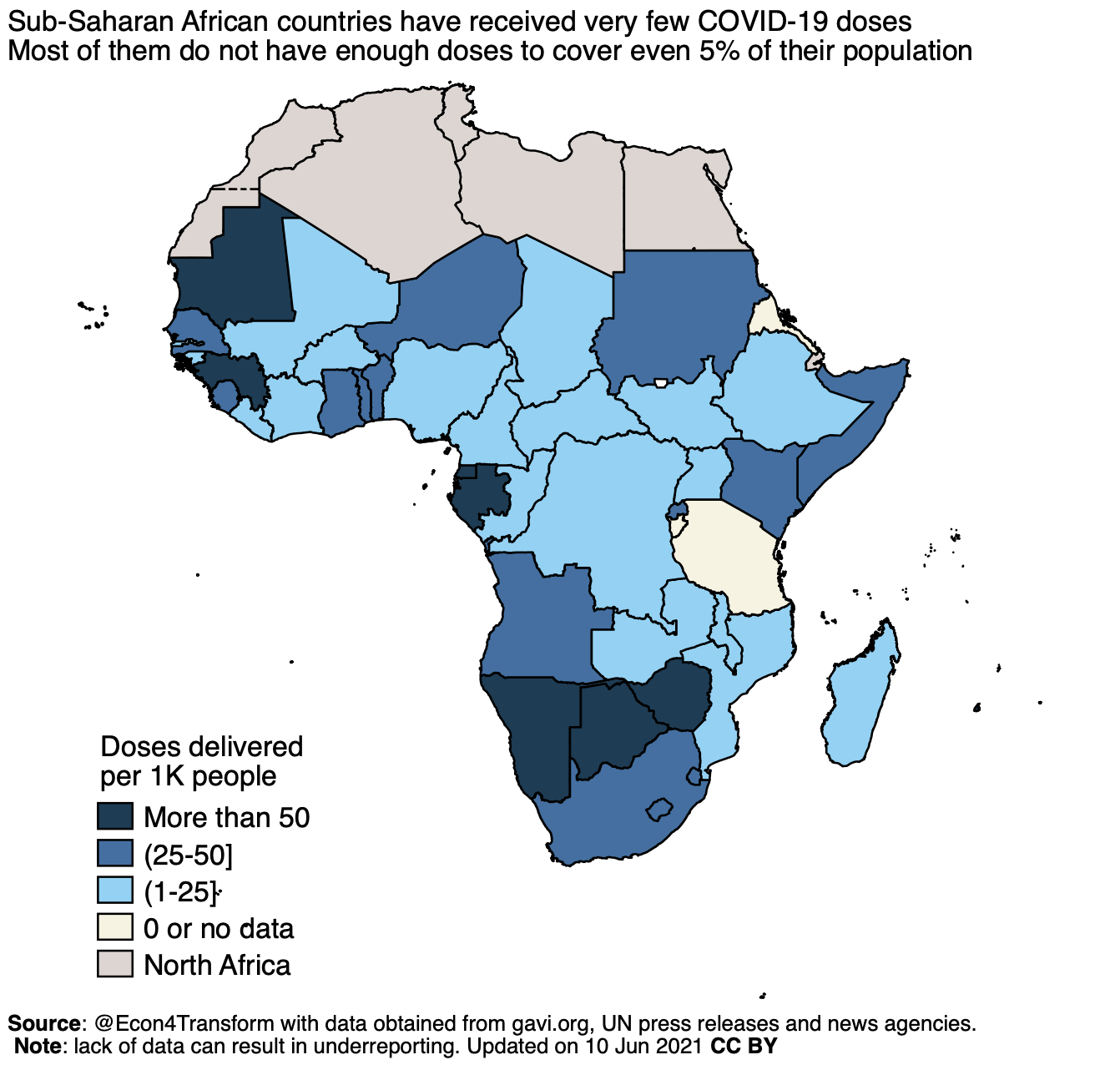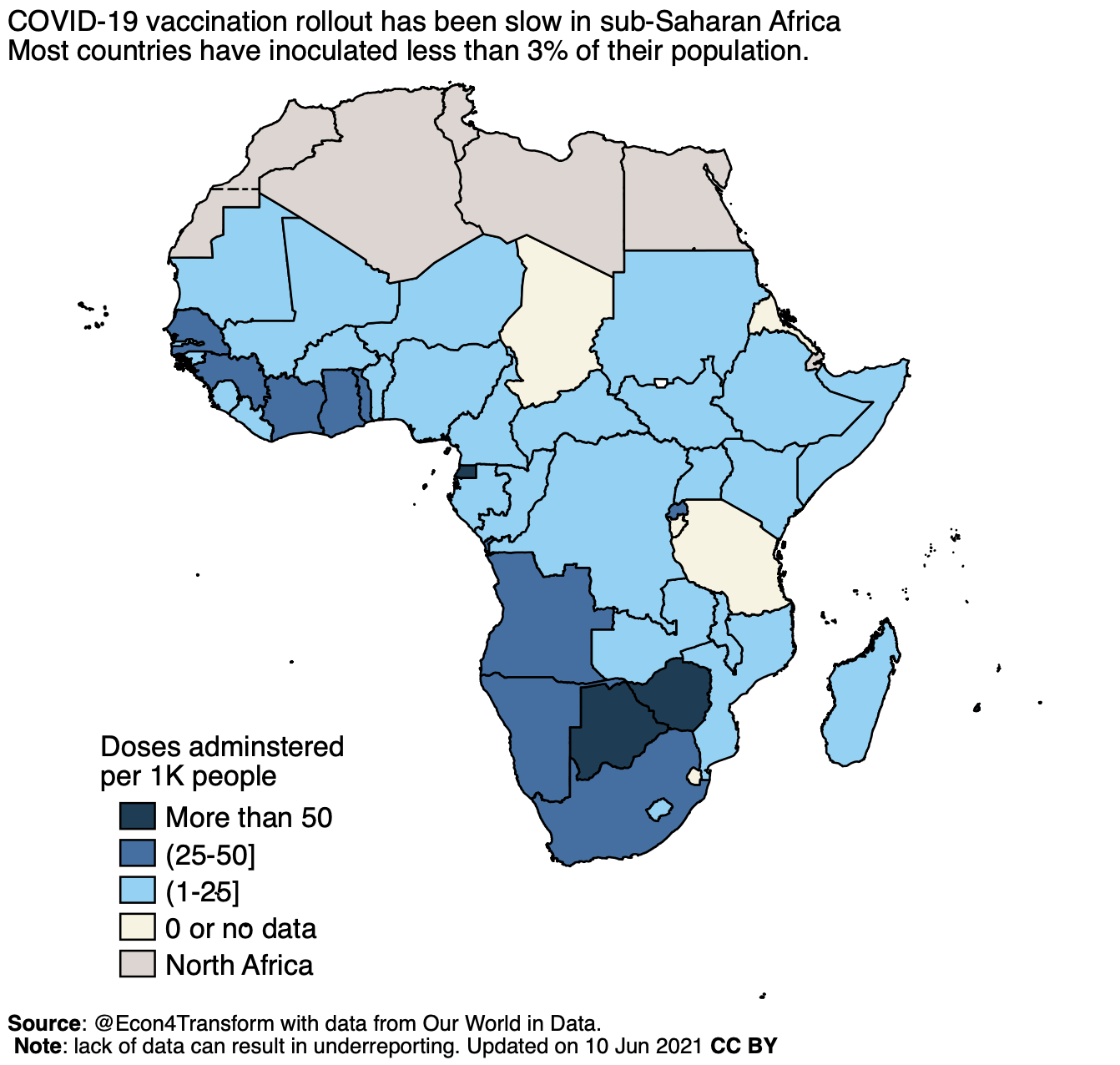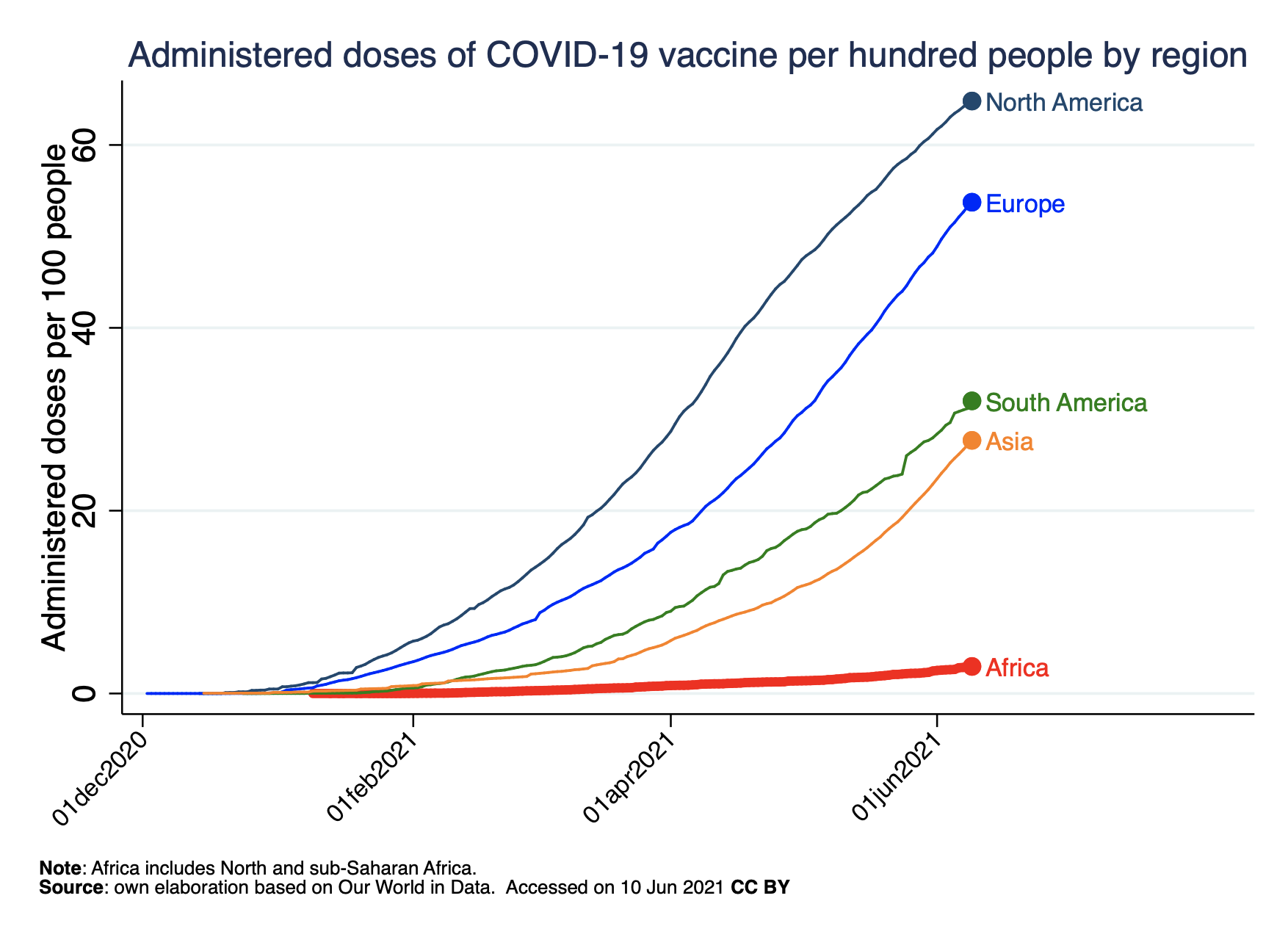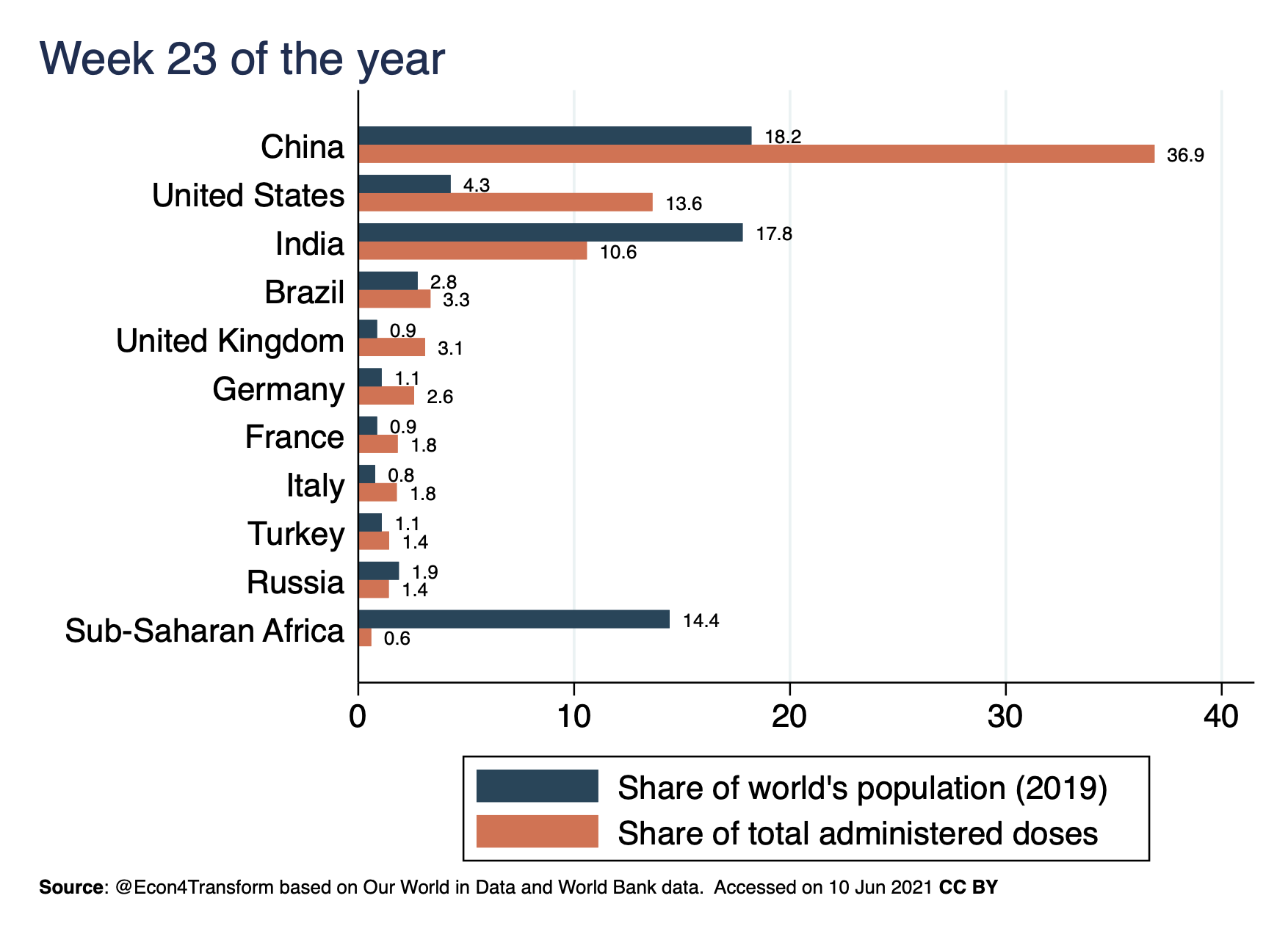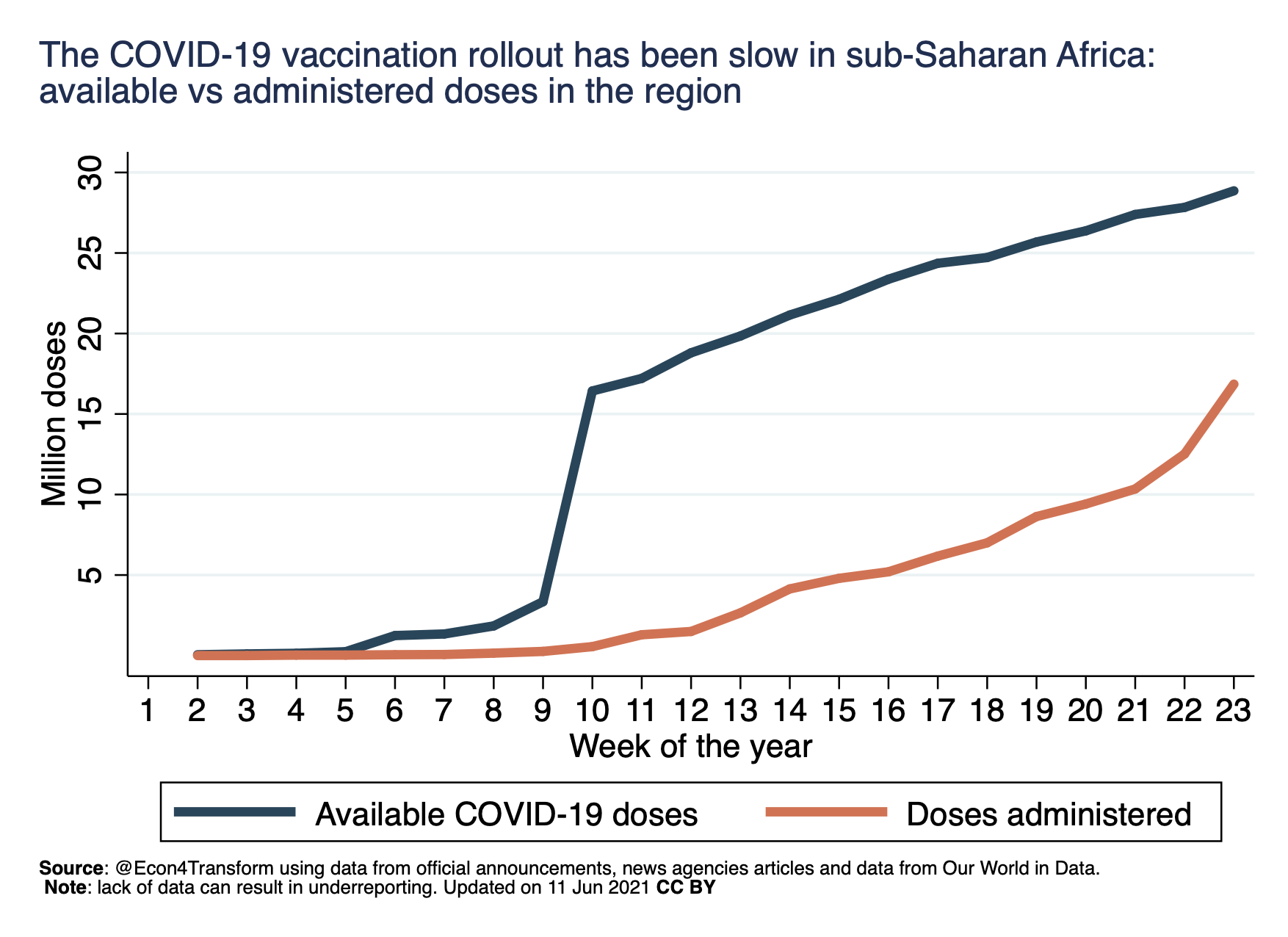Last updated: June 11th, 2021
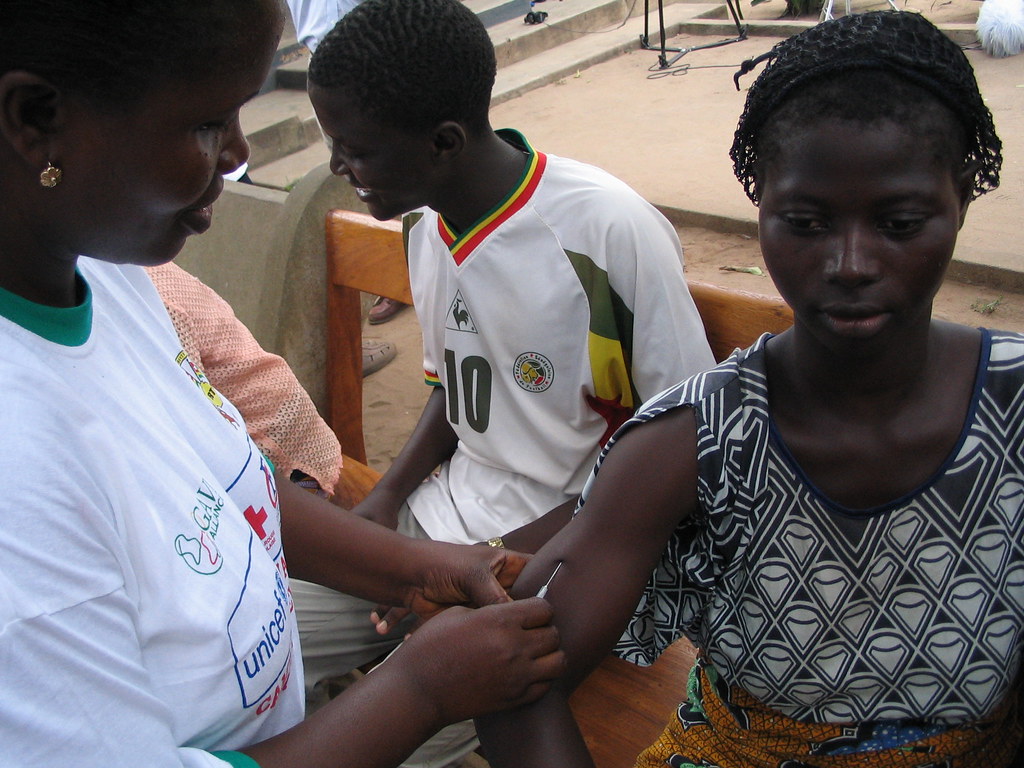
Image credits: “Vaccination drive in Africa” by Sanofi Pasteur is licensed under CC BY-NC-ND 2.0
Until mid-May 2021, sub-Saharan African countries have received only 25 million doses of COVID-19 vaccines through COVAX, bilateral donations, and purchases, enough to inoculate 1 percent of the region’s total population (considering two doses per person). This number of doses represents less than 2 percent of all world inoculations. In addition to the limited availability of doses, sub-Saharan African countries struggle to accelerate the vaccination rollout. According to the data we have been tracking, only 15 of the 40 countries that have received vaccines have used more than 50 percent of their doses stock. This situation leaves most countries in sub-Saharan Africa with more than 97 percent of their population without COVID-19 vaccines.
According to data from Our World in Data, the African continent has vaccinated only about 3 people per 100 while the rest of the world has vaccinated at least 20 per 100. Despite this fact, the share of the world’s doses available for African people has not improved; the world’s share of administered doses in Africa remains below 3 percent. This is a clear example of the current world’s vaccine inequality: while the sub-Saharan African population represents at least 14 percent of the world’s population, less than 1 percent has been vaccinated. Meanwhile, high-income countries with a smaller share of the world’s population hold more than twice the share of the world’s total COVID-19 vaccine doses.
According to data from Our World in Data, the African continent has vaccinated only about 3 people per 100 while the rest of the world has vaccinated at least 20 per 100. Despite this fact, the share of the world’s doses available for African people has not improved; the world’s share of administered doses in Africa remains below 3 percent. This is a clear example of the current world’s vaccine inequality: while the sub-Saharan African population represents at least 14 percent of the world’s population, less than 1 percent has been vaccinated. Meanwhile, high-income countries with a smaller share of the world’s population hold more than twice the share of the world’s total COVID-19 vaccine doses.
The slow COVID-19 vaccine rollout in sub-Saharan Africa
Not only sub-Saharan Africa lacks enough COVID-19 vaccine doses, but also the rollout presents some challenges. Thousands of doses approaching their expiration date have been sent back or thrown away to the COVAX facility. The mismatch between announced deliveries of COVID-19 vaccine batches and reported inoculations could mean millions of doses that are not reaching the population. There are several reasons for this. Some major barriers are logistics and vaccine hesitancy. There are however innovative solutions and lessons to be learned from previous vaccination experiences across the continent.
Overcoming logistical problems and infrastructure gaps: drones and super thermos
Drone deliveries have the potential to overcome logistical and infrastructure problems and deliver vaccines to citizens in the most rural and remote areas of the continent. In early March 2021, Ghana’s government and the WHO commissioned a private company to deliver the first COVID-19 vaccines to health facilities and hospitals across the country. The company has delivered 11,000 COVID-19 vaccines in a matter of days and claims its services can reach a third of the country’s population. In just 43 minutes, one drone delivered 250 doses to a rural village 70km away from the main health care center. The drone company operates four distribution centers across Ghana, including a drone airport and a medical warehouse. When the vaccines are delivered to the distribution centers via postal services, each distribution center delivers to a surrounding area of 22,500 km2, which is around one 10th of the country.
Another logistical solution could derive from the lesson learned from Ebola’s vaccine rollout, particularly in the DRC. As for Covid-19 vaccines (Moderna and Pfizer-BioNTech), the Ebola vaccine must be kept in ultra-cold temperatures. Innovative solutions, including a high-tech, insulated, reusable container, and “super thermos” could allow African countries to overcome the infrastructure gap, particularly reliable electrical power challenges (Nachega et al. 2021).
Hesitancy and mistrust: lessons from Liberia, DRC, and Uganda
The Ebola outbreak in Liberia highlighted the importance of institutional mistrust: according to a study by Blair, Morse and Tsai (2017), communities rejected health workers and health recommendations because they could not trust the capacity and integrity of the government institutions to protect them. A one-size-fits-all approach to community engagement is not effective. Engagement must be hyper-contextualized to affected communities. Communities in the DRC during the WHO Ebola vaccination program asked for local familiar responders who speak local languages to carry out vaccines. Lessons learned from an HPV (Human Papillomavirus) vaccination program roll out in Uganda suggest that community outreach and messaging are critical (PATH, 2011). Providing evidence-based education and outreach at least one month before and visible endorsement by national and district government leaders is critical to community acceptance. The study findings suggest having direct experience with the vaccine increases the communities’ confidence.
Data sources: we are tracking announced COVID-19 vaccine doses delivered to sub-Saharan African countries from different sources, including the GAVI-COVAX vaccine rollout live page, news agencies articles, and official announcements through their social media accounts. We are recording all these sources in this Github repository. We obtain the number of doses administered by country from the Our World in Data. Please contact ariveraballester [at] worldbank.org for questions.
License: CC-BY. Please cite this blog as: “Tracking COVID-19 vaccination in sub-Saharan Africa”, Economics for Transformation, June 11th, 2021.
This blog post is a work in progress and we expect future updates coming as the situation of the COVID-19 pandemic in sub-Saharan African countries evolves.
